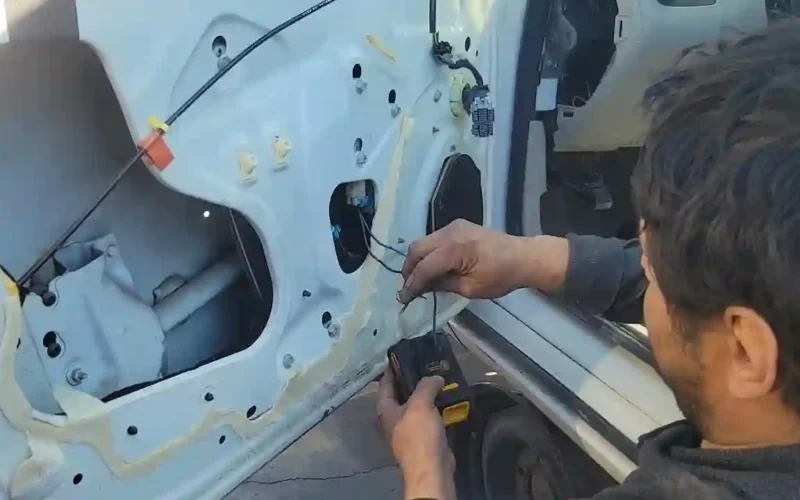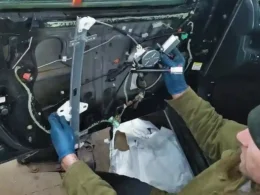In a world where environmental sustainability is becoming increasingly important, every action we take can have an impact on our planet. While we often think about large-scale environmental initiatives, even seemingly small decisions, such as window motor replacement in our vehicles, can contribute to a greener future. In this article, we’ll delve into the environmental impact of window motor replacement and how making eco-friendly choices in this area can help reduce our carbon footprint.
The Growing Concern for Environmental Sustainability
Environmental sustainability is a pressing concern in the 21st century. As we witness the consequences of climate change, pollution, and resource depletion, individuals and organizations are seeking ways to minimize their negative impact on the environment. Sustainable choices encompass various aspects of our daily lives, including transportation and vehicle maintenance.
The Role of Vehicles in Environmental Impact
Vehicles, particularly those powered by internal combustion engines, are significant contributors to environmental issues such as:
- Greenhouse Gas Emissions: The burning of fossil fuels in cars releases carbon dioxide (CO2) and other greenhouse gases into the atmosphere, contributing to global warming and climate change.
- Air Pollution: Vehicle emissions also release pollutants like nitrogen oxides (NOx) and particulate matter (PM), which can lead to poor air quality and health problems.
- Resource Consumption: The manufacturing and maintenance of vehicles consume natural resources and energy, contributing to resource depletion.
- Waste Generation: Vehicle maintenance and repair activities generate waste, including used parts and fluids, which can have adverse environmental impacts if not managed properly.
The Environmental Impact of Window Motor Replacement
Window motor replacement may seem like a minor vehicle maintenance task, but it does have environmental implications:
- Energy Consumption: Manufacturing window motors requires energy and resources. Replacing a window motor contributes to energy consumption, albeit on a smaller scale compared to manufacturing an entire vehicle.
- Waste Generation: The removal of the old window motor generates waste in the form of the old motor, which must be disposed of or recycled properly.
- Resource Utilization: The production of replacement window motors involves the use of materials and resources, some of which may be non-renewable.
- Eco-Friendly Options: Choosing eco-friendly replacement parts and recycling or properly disposing of old window motors can mitigate the environmental impact of this maintenance task.
Eco-Friendly Choices in Window Motor Replacement
To minimize the environmental impact of window motor replacement, consider making eco-friendly choices:
- Quality and Durability: Choose high-quality replacement window motors that are built to last. Durable parts may require less frequent replacement, reducing overall resource consumption.
- Energy-Efficient Motors: Opt for energy-efficient window motors that minimize power consumption during operation, helping to conserve energy over the long term.
- Proper Disposal: Ensure that old window motors are disposed of or recycled in an environmentally responsible manner. Many components of window motors can be recycled, reducing waste.
- Local Repair Shops: Support local repair shops that may specialize in eco-friendly practices, such as recycling and responsibly disposing of old parts.
- Regular Maintenance: Implement a preventative maintenance schedule to extend the lifespan of window motors and other vehicle components, reducing the need for replacements.
- Eco-Friendly Materials: Some manufacturers offer replacement parts made from eco-friendly materials or recycled materials, which can help reduce the environmental impact of window motor replacement.
The Bigger Picture: Vehicle Efficiency
While window motor replacement is a part of vehicle maintenance, the broader focus should be on improving overall vehicle efficiency and reducing emissions. Here are some steps that can contribute to a greener automotive industry:
- Electric and Hybrid Vehicles: Consider switching to electric or hybrid vehicles, which produce fewer emissions and have lower energy consumption compared to traditional gasoline-powered vehicles.
- Alternative Fuels: Explore alternative fuel options, such as compressed natural gas (CNG), liquefied petroleum gas (LPG), or hydrogen, which can reduce greenhouse gas emissions.
- Public Transportation: Whenever possible, opt for public transportation or carpooling to reduce the number of vehicles on the road and lower emissions.
- Fuel Efficiency: Choose vehicles with high fuel efficiency ratings and maintain them properly to maximize their efficiency.
- Sustainable Manufacturing: Support automakers that prioritize sustainable manufacturing practices, including the use of renewable materials and reducing waste in the production process.
- Eco-Friendly Driving: Practice eco-friendly driving habits, such as maintaining a steady speed, reducing idling, and avoiding aggressive acceleration and braking.
Conclusion
In the quest for environmental sustainability, every decision, no matter how small, can make a difference. Window motor replacement may not be the most significant contributor to environmental issues, but it is an area where eco-friendly choices can be made. By selecting high-quality, energy-efficient replacement parts, properly disposing of old components, and practicing responsible vehicle maintenance, we can reduce the environmental impact of this aspect of vehicle ownership.
While window motor replacement is a piece of the larger automotive puzzle, it serves as a reminder that even minor decisions can contribute to a greener future. By adopting eco-friendly practices in all aspects of vehicle ownership and maintenance, we can collectively work towards a more sustainable and environmentally responsible automotive industry.











